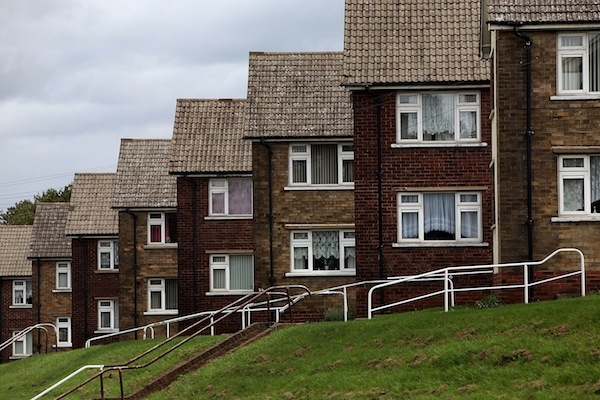Good news on housing: this government is building more homes. New figures from the Communities and Local Government department show housing starts in the second quarter of 2014 increased by 18 per cent on the same quarter a year earlier and now stand at 36,230. Housing starts are the best picture we can get of how healthy housebuilding is right now. Completions, which naturally reflect an earlier situation but can also be affected by sudden changes in the economy that leave homes half-built (as in Ireland’s ghost estates) are also up by 7 per cent on the same quarter last year and up by 6 per cent from the previous quarter. Annual housing starts in the year to June 2014 were 137,780, which is a 22 per cent rise on the previous year. Completions for the year were 114,440, up 7 per cent.
This is the highest level of housebuilding since the pre-recession peak in 2007. Jolly good. Housing and planning minister Brandon Lewis is happy, saying: ‘Wherever you look across the housing market, the signs of progress are clear.’
Now, far be it from me to sound a note of gloom on the government’s progress on housing (oh, except for here, here, here and, er, here). But while this is all very well and good, it’s not exactly time to sit back and say ‘job done’ on planning reform. There are two reasons for this.
- It’s not nearly enough. This is what campaigners say whenever there is a piece of good news. It sounds ungrateful, and ministers could quite easily argue that housebuilding is on an upward trajectory. Both points can be true: housebuilding is rising, but it may peak before it reaches the necessary level. Economists estimate we need around 250,000 new homes a year (and before certain people get too excited, it’s not all down to immigration, even though that is a facile excuse: immigration accounts for 90,000 of new homes that are needed, and there are other factors such as fragmented families, people staying single for longer but not living with their parents and population growth) to keep up with demand. A 22 per cent rise in annual housing starts to 137,780 on last year is a good thing. But it’s not 250,000.And the worry is that these welcome rises won’t continue and that the planning system will continue to constrain development, as it has done for many years, so that sufficient numbers of homes are never built. Those who are worried are not just people like me who like to make a hobby out of wringing their hands about housing: they’re the people making decisions in government. It is difficult to find a minister who will honestly say off the record that the government has made sufficient changes for enough homes to be built. More homes, yes, but not enough homes. There was certainly a great deal of consternation from the pro-development faction in government when Nick Boles was moved from the planning brief.
- People are getting angrier about development. The so-called ‘Nimby’s charter’ that the Conservatives apparently proposed as part of their planning reforms failed to materialise: instead, voters are so antagonised by the way the new system continues to impose new housing on them that Labour feels there is mileage to be gained from promising voters a ‘real choice’ over housing development. Nimbys have flourished not just because people are selfish and prefer to look out at rolling hills rather than countryside scaled over by new roofs and driveways, but because the state has taken the goodwill of the public for granted on housebuilding for too long already. Continuing to antagonise the public over planning will not encourage a change in attitudes towards development. And so a rise in housebuilding could appear in tomorrow’s papers as a frightening thing because so many readers are still opposed to new development.







Comments